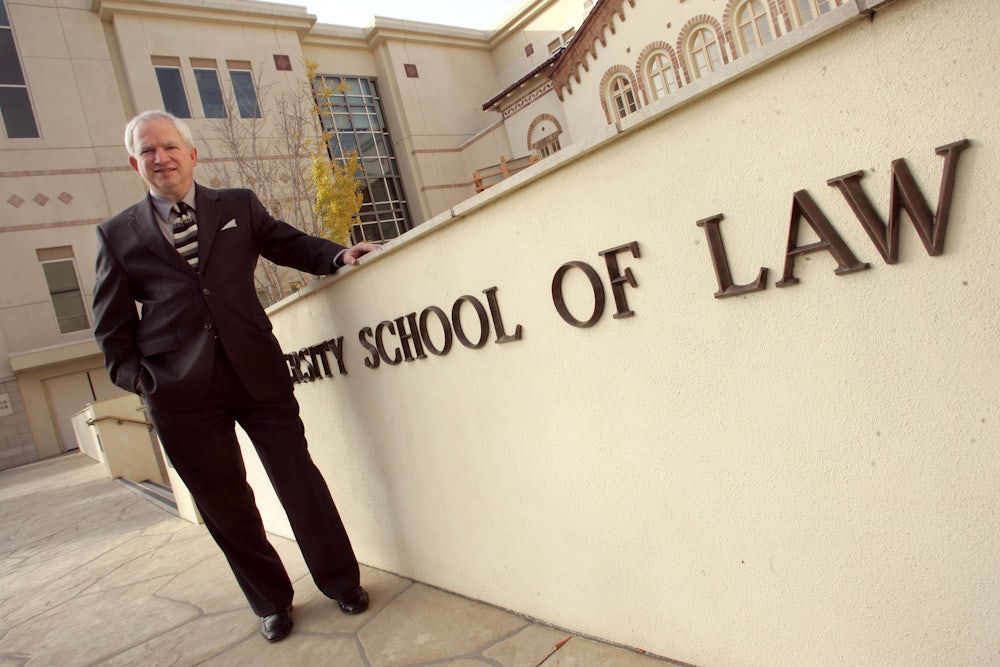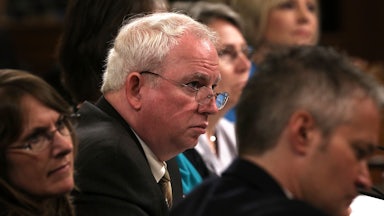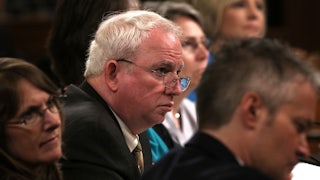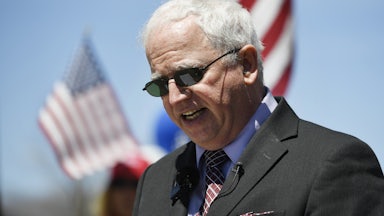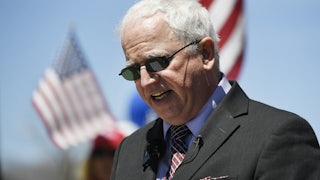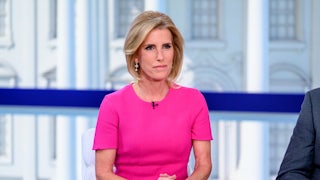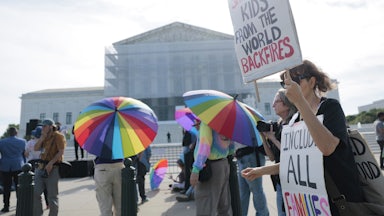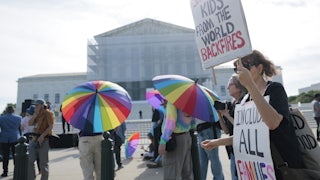John Eastman is often scorned as a villain of the 2020 election, and for good reason. He played an instrumental role in developing the legal theories behind former President Donald Trump’s effort to overturn the election. But Eastman is also an unintentional hero of sorts for one simple reason: He wrote everything down. And not only did he write everything down, he also did so in emails that could be semi-easily obtained by the public.
Eastman’s commitment to providing a written record of his sins against the republic is a gift to the American people, a clear and unambiguous monument to his willingness—and the eagerness of his allies—to end two and a half centuries of American self-government on Trump’s behalf. There can be no denialism, no trutherism, no spin. It’s all there in black-and-white text. Take, for instance, the latest revelations from a batch of emails made public earlier this week. The 64-page trove includes its share of mundane materials. In one exchange, Eastman tries and fails to get reimbursed by the university for his in-flight Wi-Fi. But other documents are far more sinister.
On December 4, 2020, Eastman received an email from Russ Diamond, a Republican state lawmaker in Pennsylvania. Diamond said that he’d seen Eastman’s testimony before a Georgia Senate committee on the election and asked him for advice. He and other state GOP lawmakers, Diamond said, were “searching for legislative solutions to our current national predicament,” a reference to Trump’s defeat in the election. Diamond asked Eastman whether the state legislature could appoint a different slate of presidential electors for Pennsylvania from the one chosen by Pennsylvania voters.
Eastman told Diamond that they could and outlined his theory for how to do so. A few emails later, Eastman proposed something even more radical: Pennsylvania Republicans could concoct a new vote total for the state by manipulating the actual results. He said he hadn’t watched a hearing on purported evidence of voter fraud in the state but assumed it was all true. “If that is the case, you could add another section of factual findings based on the evidence presented at that hearing, and then adopt a resolution that has the Legislature simply affirming what appears to have been the result of the popular vote untainted by the illegal votes,” Eastman wrote.
Where would this “untainted” vote count come from? Eastman suggested counting the number of absentee ballots received after the deadline, then subtracting votes from each candidate’s certified total in a ratio that was proportional to the candidate’s share of all post-deadline ballots. “For example, depending on how many ballots were counted that were received after the statutory deadline (say 10,000 for example’s purpose), those 10,000 votes need to be discarded, and you can take the absentee ballot ratio for each candidate in the counties [where] late-received ballots were illegally counted and deduct the pro-rated amount from each candidate’s total,” he advised Diamond.
For other purported slights during the counting of in-person votes, Eastman also suggested subtracting votes from the certified totals using even fuzzier math. He told Diamond that “you could take the difference between the 4 percent historical rejection rate and the .34 percent rejection rate done under the illegal procedures, and similarly discount each candidat[e’s] totals by a prorated amount based on the absentee percentage those candidates otherwise received.” Since these “discounts” would likely apply to areas and voting methods where Democrats received an outsize share, Eastman apparently believed that the postadjustment “results” would swing the state to Trump.
“Then, having done that math, you’d be left with a significant Trump lead that would bolster the argument for the legislature adopting a slate of Trump electors—perfectly within your authority to do anyway, but now bolstered by the untainted popular vote,” he concluded. “That would help provide some cover.” It’s hard to not appreciate Eastman for spelling it out so clearly. Pennsylvania Republicans, in his view, could overturn the election results for any reason or none at all. But since they know there’d be a lot of political blowback if they did it with the election results they have, they might as well try to do it with the election results they want.
What Eastman argued for is practically indistinguishable from the voter fraud that he claimed to oppose, of course. It’s the sort of thing you see in Eastern European kleptocracies, where the pesky will of the electorate gets in the way of the “true” result favored by one party and needs to be “adjusted” accordingly. Eastman’s proposal even foreshadowed Trump’s infamous phone call with Georgia Secretary of State Brad Raffensperger a few weeks later, where he urged the Republican election officials to “find 11,780 votes, which is one more than we have, because we won the state.” (Trump did not win the state.)
How do we know what was in Eastman’s emails? Because he did us all the immense courtesy of writing them on an account provided to him by the University of Colorado system. During the 2020–2021 academic year, he worked as CU Boulder’s visiting professor of “conservative thought and policy,” in the university’s Bruce D. Benson Center for the Study of Western Civilization. There he fell under one of Western civilization’s better recent innovations: open-records laws. The Colorado Ethics Institute, a nonprofit watchdog, obtained them after filing a request with the state and then turned them over to The Denver Post and the House January 6 committee.
I can’t say that I’m a big fan of Eastman’s willingness to plan a coup d’état, but I am grateful that he was so willing to write everything down. Trump, the man on whose behalf he tried to throw out the election results, is notorious for his refusal to use a computer, take notes, or ever put anything down in writing that could later be used against him in a court of law. Eastman, thankfully, had no such predilections. In December 2020, for example, he infamously wrote a memo for the Trump White House that suggested how then–Vice President Mike Pence could toss out the election results on January 6 and unilaterally declare Trump the winner.
Pence eventually decided against adopting Eastman’s plan. He publicly announced that he wouldn’t interfere in the Electoral College tabulation a few days before the joint session of Congress. That prompted a furious reaction from Trump and his allies, who openly demanded that Pence change course and then incited a mob to attack the Capitol in retribution when he didn’t. Once again Eastman had the generosity to write out evidence of his own wrongdoing. In heated email exchanges with Greg Jacob, the vice president’s counsel at the time, Eastman urged him and Pence to use the chaos on January 6 to delay certification, which would have effectively rewarded the rioters who had just ransacked the Capitol for doing so.
Alas, Eastman’s laudable commitment to transparency may now be over. He parted ways with CU Boulder in January 2021, after he came under intense scrutiny for his role in the postelection chaos. Eastman has since decamped from Colorado and taken up a position as a senior fellow at the Claremont Institute, which is sort of like the Xavier School for Gifted Youngsters Who Want to Overturn American Democracy. Since Claremont isn’t part of a public university, it won’t be possible to obtain its internal conversations with freedom of information acts or other open-records laws. One can only imagine what they’re cooking up on those email threads right now.
